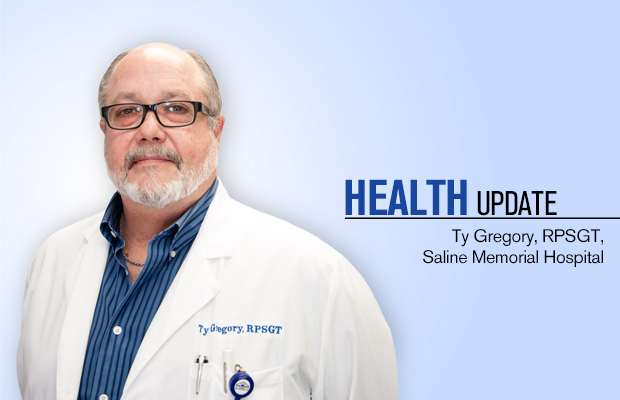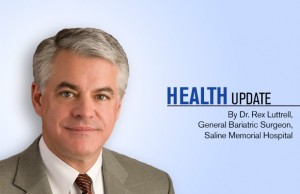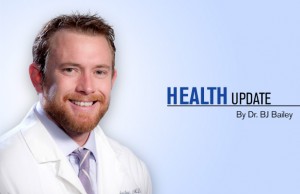Health Update: Sleeping Hard Or Hardly Sleeping?

How much sleep did you get last night? Nine hours, seven or eight hours; maybe less? If last night was not a typical representation, what is your average for a week? Factor into that the quality of your sleep. Do pain or snoring, your children or worries of the day disrupt your sleep? Many of us may be getting only five or six hours, and that precious time is being interrupted by a multitude of reasons.
Occasionally something happens to increase our awareness of how valuable our sleep is, like losing an hour of it on the beginning of Daylight Savings Time. It sounds like a great concept. Get up a little earlier to have more daylight to do more things. But in reality, many folks take quite a while to adjust to the two time changes each year. Your circadian rhythm is your internal body clock that regulates when you feel sleepy and wakeful. Changes like Daylight Savings Time can really throw some people’s circadian rhythm for a loop, even for weeks after the time change.
In sleep medicine, we tend to frown upon anything that disrupts our sleep. In the past, it was the light bulb. Before that invention, we went to bed shortly after sunset or when we were tired, and awakened at sunrise. We had less external influence on our sleep behavior, and were considered more sleep healthy.
Currently it is the computer and all associated with it, including the internet, working from home, chatting with family and friends, and the list continues. According to a Centers for Disease Control poll in 2009, we are becoming more sleep deprived as a society, with over a 1/3rd of adults reporting less than 7 hours of sleep per night. Nearly 40% admit to having an unintentional “nodding off” during the day at least once per month, and almost 5% admit to dozing off at the wheel at least once per month.
Adults should average between seven to nine hours of restorative sleep per night, and children around 9 to 11 hours per night depending on their age. If you are not reaching those goals, something is going to give, and sadly it may be your mind or body. It may not be today or tomorrow, but someday.
Many studies have shown that a lack of sleep—whatever the cause—leads to a shorter life, more medical complications and more mental disorders. Eight hours of sleep may sound like a dream, but it should be a priority. The reason we say restorative sleep is that sometimes it may not be the quantity, but rather the quality of sleep that may be missing.
There are many sleep disorders that decrease the quality of sleep due to frequent awakenings, thus decreasing the quantity of your sleep. You may not be aware of the awakenings, but they still cause your brain to arouse, thus reducing your actual sleep time. Some of the more common and most dangerous ones are snoring, sleep apnea, restless legs syndrome or periodic limb movement disorder, and insomnia.
Do you think snoring is laughable or a sign of good sleep? I’m afraid not. Thanks to the 3 Stooges and movies in general, snoring is often regarded as funny, a sign of a good night’s sleep, or just an annoyance. Snoring is often a sign of sleep apnea, and is one of the most dangerous disorders causing high blood pressure, heart disease, irregular heartbeat and stroke.
Sleep apnea is defined as a pause in breathing for 10 seconds or more, but in reality many sleep apnea events may last for a minute or more, and may occur hundreds of times per night. Each time your breathing stops it causes a rise in heart rate and blood pressure, a decrease in oxygen level, among many other effects on your body. These frequent stresses on your heart and brain are why sleep apnea is one of the leading causes of heart attack, stroke and high blood pressure. Treatments include wearing a CPAP mask or dental device while sleeping, although weight loss or side sleeping may decrease symptoms somewhat.
Restless Legs Syndrome (RLS), or its nighttime cousin Periodic Limb Movement Disorder (PLMD), is characterized by an uncontrollable movement or need to move your legs. It is described as a twitch, cramp or “crawly feeling” in your legs, and at night may cause difficulty going to sleep or frequent awakenings. RLS and PLMD can begin at any age and generally worsens as you age. PLMD can disrupt sleep leading to daytime drowsiness and can make traveling difficult, but can be effectively treated with medication.
Insomnia is defined simply as the inability to initiate or maintain sleep, although it is not that simple. There are many factors associated with insomnia including pain, depression or stress. Many of the other 83 sleep disorders cause insomnia at some point, but 60% of the population complain of it sometime in their life, whether it’s an acute or chronic problem. Treatment may include behavior modification or medication, but largely depends on the cause of the insomnia.
There are 84 recognized sleep disorders, with many of them crossing over into each other, and many can have terrible results. The promising part is that most disorders have a solution, but frequently it can be realizing there is a problem to be solved that can lead to a longer, healthier life.
Ty Gregory works at the Sleep Disorders Center Director at Saline Memorial Hospital.









0 comments